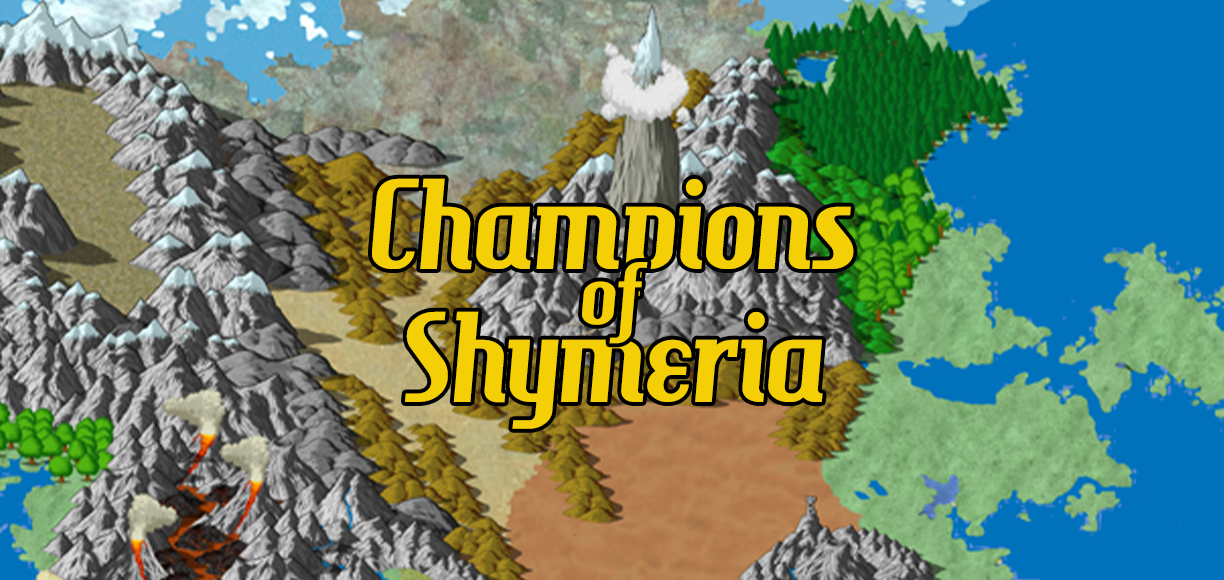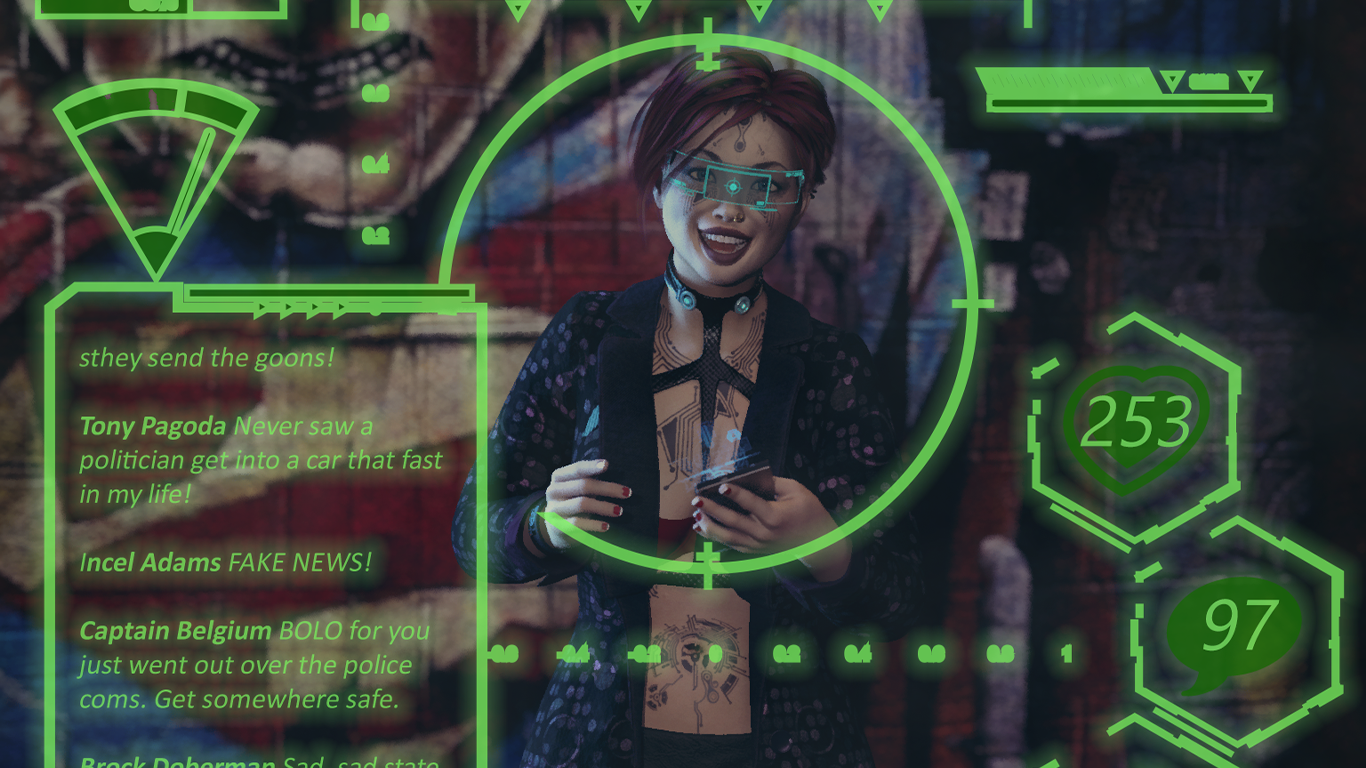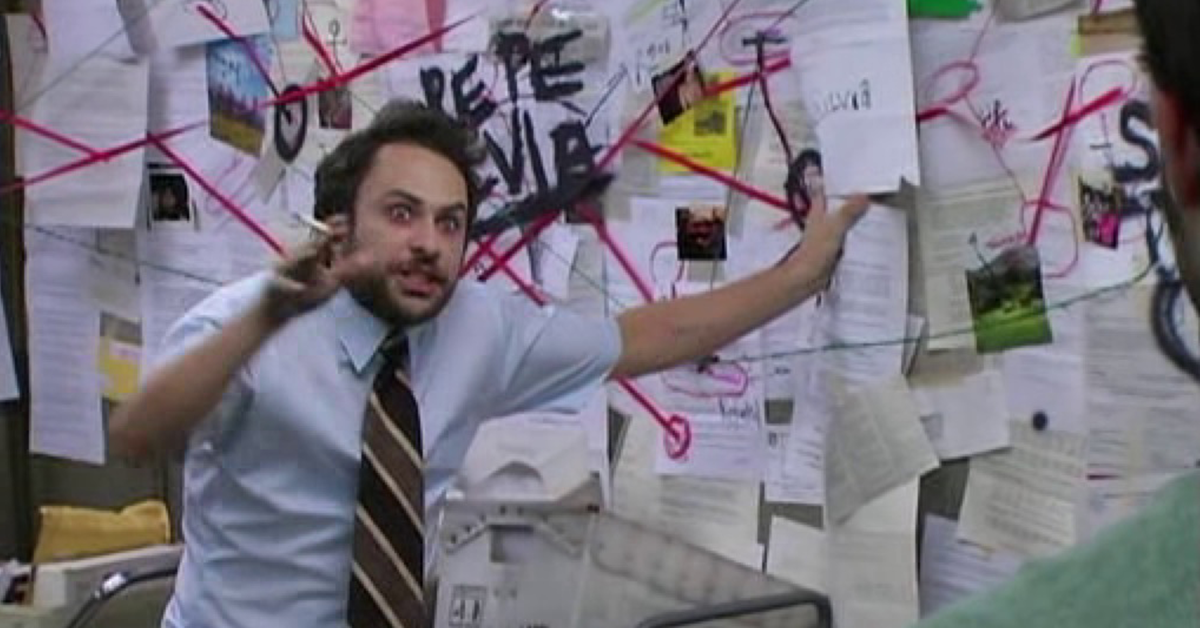We may earn money or products from the companies mentioned in this post.
With the new rules changes, I had to change a few things around with character creation, so while I was at it I rearranged, renamed, and simplified character creation. Since I also had to rewrite the Sample of Play Theater entry for character creation, I went ahead and upgraded the characters for the Guardians of Aetheria, the sample game I’m using in the examples. The basic premise is “He-Man/Thundarr the Barbarian style 80s cartoon with nods to Ralph Bakshi and Heavy Metal.” I’ll post the stats for the four PCs below, but first I’ll go over the format, especially the changes.
[Editor’s Note: The rules here are from an older version of the Cinemechanix system.]
Character Information
The first part of the character sheet has game information, and is divided into four main sections: Character Concept, Tropes, Special Effects, and Stats.
Character Concept
The Character Concept section contains the core character traits plus any game-specific traits that the GM feels are necessary. The big change here is that I’ve gotten rid of Hooks, which never quite worked the way I wanted them to. That leaves 3 core traits:
- Role: Role is similar to Job in QAGS and describe the character’s core skill set or function, but adds a word or two about the character’s personality; something like “Hard-Boiled Detective” or “By-the-Book Cop.” Role is within the context of the story, so a character’s Role might not be the same from one game to the next. In Full House, Jesse’s Role is “Cool Uncle,” but in a Jesse and the Rippers spin-off it might be “Responsible Lead Singer” or something.
- Backstory: Just a quick description of the most relevant, interesting, or life-changing part of the character’s past: graduated at the top of his class, just got out of prison, combat veteran, whatever.
- Fatal Flaw: Since Fatal Flaw is technically a role-playing tool and not really a game mechanic (you never roll to see if your Fatal Flaw takes effect like you do a Weakness in QAGS), I thought of moving it to the story side of the sheet, but it’s like such a core part of the character that it feels like it should stay here. Besides, you can earn Acclaim for playing it well, so that kind of justifies leaving it here, I guess.
In addition to the core traits, you may have additional traits specific to the game. For example, a Harry Potter game would have a “Hogwart’s House” trait, a supers game may have “Secret Identity,” and M-Force would have “Day Job.” For Guardians of Aetheria, there are 3 game-specific traits:
- Origin: This is to define what kind of creature your character is and possibly where his powers come from. Is he a human, a mutant, a member of a non-human race, or some kind of weird hybrid or automaton, for example.
- Toy Gimmick: Since the game is based on 80s cartoons, every character needs some kind of cool gimmick so kids will want to buy the toy.
- Accessories: These are the cheap plastic weapons and stuff that come with the character. A character can have one “big” accessory, like a horse or a vehicle, or two smaller accessories (weapons or equipment, most likely).
None of the Character Concept traits have numbers associated with them (though game-specific traits might have special effects associated with them–for example, elves might get a bonus to magic or whatever). If your character concept is relevant to the roll, you get to roll an extra die and take the highest for your roll. So a character with a Role of “Knight” would roll two dice when jousting and use the higher roll.
Tropes
The basic definition of Tropes hasn’t changed. Trademarks are still skills and things the character is good at (“Strong” or “Swordsman” or whatever), Drawbacks are still things that cause the character to do certain things badly (“Hard of Hearing” or “Computer Illiterate”). The big difference is that instead of bonus or penalty dice, Tropes give the character a modifier to the roll total. Characters get points for Trademarks equal to double their Hero Factor and can get more by taking Drawbacks (up to Hero Factor).
Special Effects
Originally, this section was for mechanics for traits that needed extra mechanics, so you might have a Hook of “werewolf” and Special Effects for extra damage from silver and heightened senses and whatever else werewolves do in the game setting. Now anything weird is a Special Effect. Figuring out how Special Effects work is part of putting together the game, and players can choose whatever method works best. Special Effects can be pre-defined based on other choices (“Dwarves have the following abilities”), chosen from a list (“Wizards get a number of spells equal to Hero Factor”), bought with points “Invulnerability is 50 points, Matter Eating is 10”), or just decided by the GM and player on a case-by-case basis (“How about a +5 to all magic rolls?”). There will be detailed chapter with lots of examples to help players and GMs decide how to define their own Special Effects, and specific game settings (including some of the Elevator Pitches in the book) will have their own special effects to give people even more examples of how it’s done.
Stats
Hero Factor, Acclaim, and Stamina haven’t really changed, but Stamina is now 10 + Hero Factor instead of 5 x Hero Factor.
Story Information
The Story side of the sheet has 3 sections: Casting Call, Plot Devices, and Trivia and incorporates some of the things that were previously considered Hooks that don’t need game mechanics.
Casting Call
This is basic character description-type information:
- Tag Line and WWPHITM?: Are the same as in QAGS.
- Character Design: This is for anything interesting about your character’s look or costume. If the character has a cool Nick Fury eye patch but doesn’t suffer any penalties because of the missing eye, it’s part of the character design. (If it does cause problems, the character would have a “Poor Depth Perception” Drawback or something).
- Characterization: Personality traits, mannerisms, or anything else that will help the player role-play the character goes here.
Plot Devices
Plot Devices basically covers any important story information that the GM needs to know, either because it might make it easier for the characters to resolve plot points or because she needs to work it into the story. This can include things like major resources, important contacts, plot hooks, etc. If your character is wanted by the law, has his own crime cave, or wants to kill the Six-Fingered Man, it should be mentioned here.
Trivia
Trivia is anything else the player wants to note about the character but that probably isn’t important to the game. Basically Dumb Facts in QAGS terms.
Plot Developments
Plot Developments is the third section of the character sheet that starts out blank. It’s for notes about things that happen during the game, especially if those things need mechanics. Since Cinemechanix uses seasonal TV as the model for character development, nothing is permanent until it survives a season break. So if a character gets an arm chopped off or finds a magic sword or whatever, that’s a plot development. If the character gets a penalty to some rolls because of the missing arm or a bonus for the sword, that information goes here. Some plot developments may disappear or become irrelevant during the current season (the sword gets destroyed or loses its magic when it kills the thing it was made to kill). If not, the GM and player decide whether the development hangs around into the next season (the penalty for the missing arm becomes a Drawback), gets explained away (the character gets a new robot arm), or just disappears (the character is still missing an arm, but has gotten used to it and no longer suffers a penalty).
Guardians of Aetheria
So here are some sample characters using the new character definitions. The section headings from the character sheet (Character Concept, Tropes, and Casting Call) and Plot Developments aren’t included in the stat block. I also haven’t gotten around to writing descriptions yet.
Glob-Lobber
Role: Barbaric Warrior
Backstory: Scarlands warrior rescued from demonlings by Uriel
Fatal Flaw: Aggression: Glob-Lobber prefers to solve problems through violence.
Origin: Mutant
Toy Gimmick: Oozes real slime!
Accessories: Battle Spear, Dragon Tooth Amulet
Trademarks: Battle-Tested +3, Slime Effects +3, Tracking +2, Keen Senses +2, Scarred Lands Survival +2
Drawbacks: None
Hero Factor: 6
Acclaim: 6
Stamina: 16
Special Effects:
- The Dragon Tooth Amulet gives Glob-Lobber a bonus equal to his Hero Factor to rolls to resist magic.
- The slime that Glob-Lobber secretes is very sticky and gives him a Concept Bonus to rolls for climbing, holding onto things, etc. He can also leave puddles of slime to create “glue traps” or to hold things in place.
- In combat, Glob-Lobber can throw slime at his opponents. The slime doesn’t cause any damage, but he can use it to put an opponent at a disadvantage or make him suffer Penalty Dice (by entangling him in sticky slime), or to disarm an opponent.
Tag Line: “Get ready to bleed!”
WWPHITM? Ron Perlman
Character Design: Slimy humanoid with slimy, scaly skin and sharp teeth.
Characterization: Superstitious
Plot Devices: None
Trivia: Eats bugs.
Shalamar the Sorceress
Role: Tenacious Sorceress
Backstory: Narrowly escaped capture when Bloodgrave’s forces attacked the Conclave of Wizards
Fatal Flaw: Reckless: Shalamar tends to throw caution to the wind and act on impulse when in pursuit of a goal or when innocents are being harmed.
Origin: Human
Toy Gimmick: Hands glow with magical power and make real magic noises!
Accessories: Midnight the Black Cat, Bracelets of Hippolyta
Trademarks: Spellcasting +5, Knows Everything +3, Defense +2, Unallocated: 2 points.
Drawbacks: None
Hero Factor: 6
Acclaim: 6
Stamina: 16
Special Effects:
- Shalamar knows the following spells: Mana Attack, Mana Shield, Telekinesis, Plant Control, Concealment, and Healing.
- Shalamar has a telepathic link with Midnight and can see through her eyes.
- Midnight can shapeshift into a panther once per episode. When she changes is normally the GM’s decision, but the player can make the decision (or veto the GM’s decision) by spending 5 Acclaim. Midnight has a Hero Factor of 3 regardless of form.
- The Bracelets of Hippolyta can be used to deflect missile attacks.
Tag Line: “Merlin’s Wand!”
WWPHITM? Mila Kunis
Character Design: Standard 80s cartoon wizardess sky blue robes.
Characterization: Compassionate, Brave
Plot Devices: Mission: Find out what Bloodgrave did with her teacher, Godric the Grey.
Trivia: Crows give her the creeps, but so do scarecrows.
Teg Tylwyg
Role: Resourceful Explorer
Backstory: Abandoned by his tribe as a child.
Fatal Flaw: Curiosity: Teg’s curiosity often trumps his self-preservation instinct, causing him to ignore potential dangers when there’s something new to be learned.
Origin: Snuk
Toy Gimmick: Periscoping Explorer’s Staff lets you see around corners!
Accessories: Hoversled filled with exploring equipment and loot
Trademarks: Action Archaeology +4, Gadgets & Gizmos +3, Sharp Mind +3, Ancient Lore +2
Drawbacks: None
Hero Factor: 6
Acclaim: 6
Stamina: 16
Special Effects:
- The Explorer’s Staff is a steel tube that can expand out to 20 feet. Lockable joints every 2.5 feet allow it to be arranged into various configurations. The staff has a lens on each end and a series of mirrors inside that allow it to be used as a periscope to peer around corners and over obstructions. Teg also has a collection hooks, blades, and other attachments that can be fitted to the end.
- Snuks get a +2 bonus on rolls involving stealth, scavenging, and surviving in the Scarred Lands. They also may get a Context bonus or penalty die for rolls where their small stature is useful or disadvantageous. Snuks can see as well in the dark as in full daylight.
Tag Line: “Great Gondor’s Ghost!”
WWPHITM? John Noble as a Middle Earth movie dwarf
Character Design: Little guy with a giant beard and lots of pouches and pockets full of junk.
Characterization: Mumbles to himself a lot
Plot Devices: Pack Rat: The Hoversled is loaded tools, supplies, and things Teg has found in the ruins. It contains most common items useful for exploring or likely to be found in the ruined cities.
Trivia: Always wears goggles.
Sir Uriel Lightblade
Role: Valiant Knight of the Phoenix
Backstory: Second son of Baron Gareth Lightblade of Castle Dawnspire
Fatal Flaw: Death Before Dishonor: Sir Uriel takes his vows very seriously and would rather die than betray his order or his king.
Origin: Human
Toy Gimmick: Lightblade sword really lights up!
Accessories: His trusty warhorse, Flamedancer
Trademarks: Formidable Swordsman +5, Feats of Strength +3, Surprisingly Acrobatic +2, Missile Deflection +2
Drawbacks: None
Hero Factor: 6
Acclaim: 6
Stamina: 16
Special Effects:
- Lightblade can be used as a missile weapon that fires darts of light energy. It can only fire a number of darts per scene equal to the wielder’s Hero Factor.
- Lightblade can be used to deflect missile attacks.
- Lightblade can also be used as a light source.
Tag Line: “By Bennu’s beak!”
WWPHITM? Chris Hemsworth
Character Design: Big muscle-bound warrior with an energy sword and gladiator-style armor.
Characterization: Hero Voice, Honorable
Plot Devices: Searching for the Sword of Acala, the legendary First Lightblade
Trivia: Early riser.
Join the Guardians of Aetheria Official Fan Club today!





